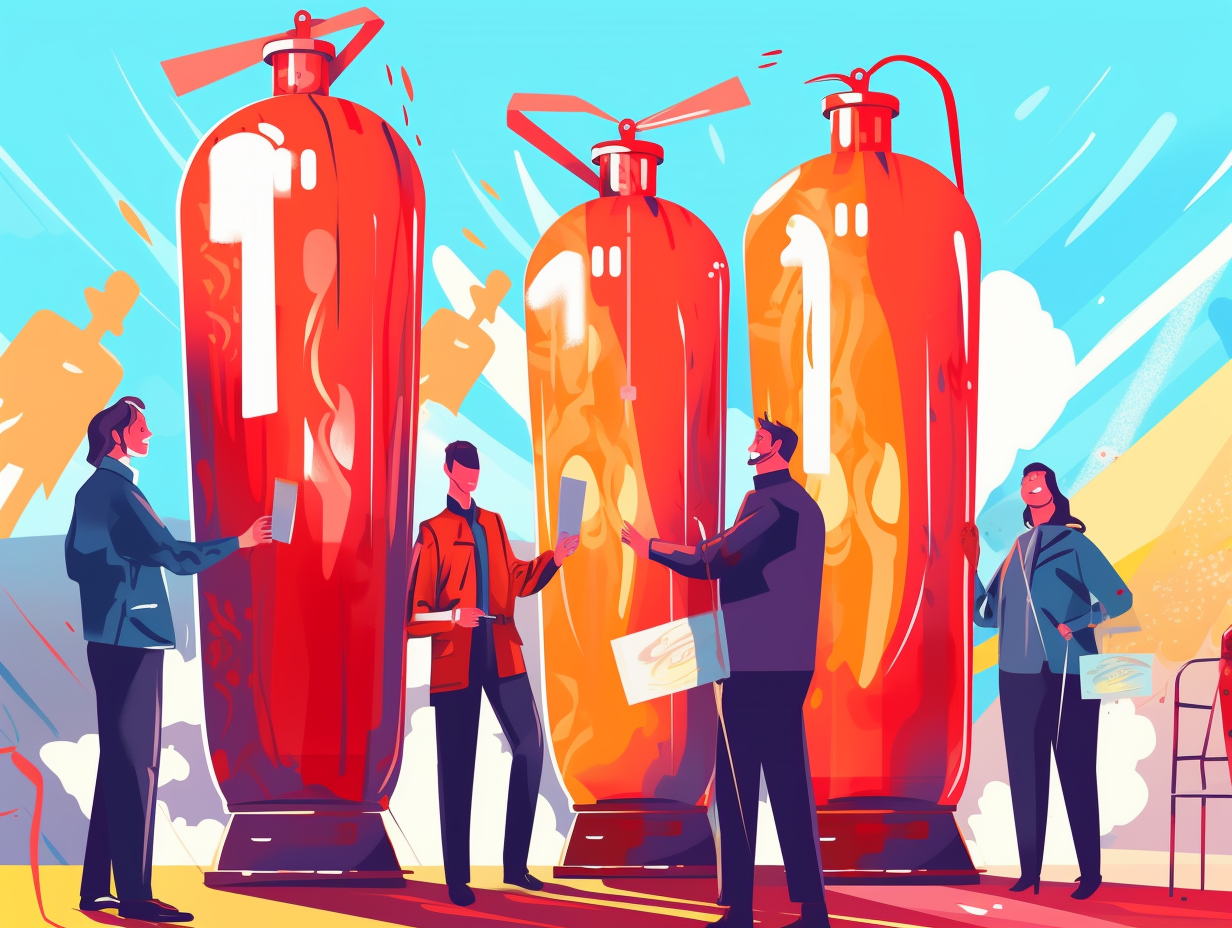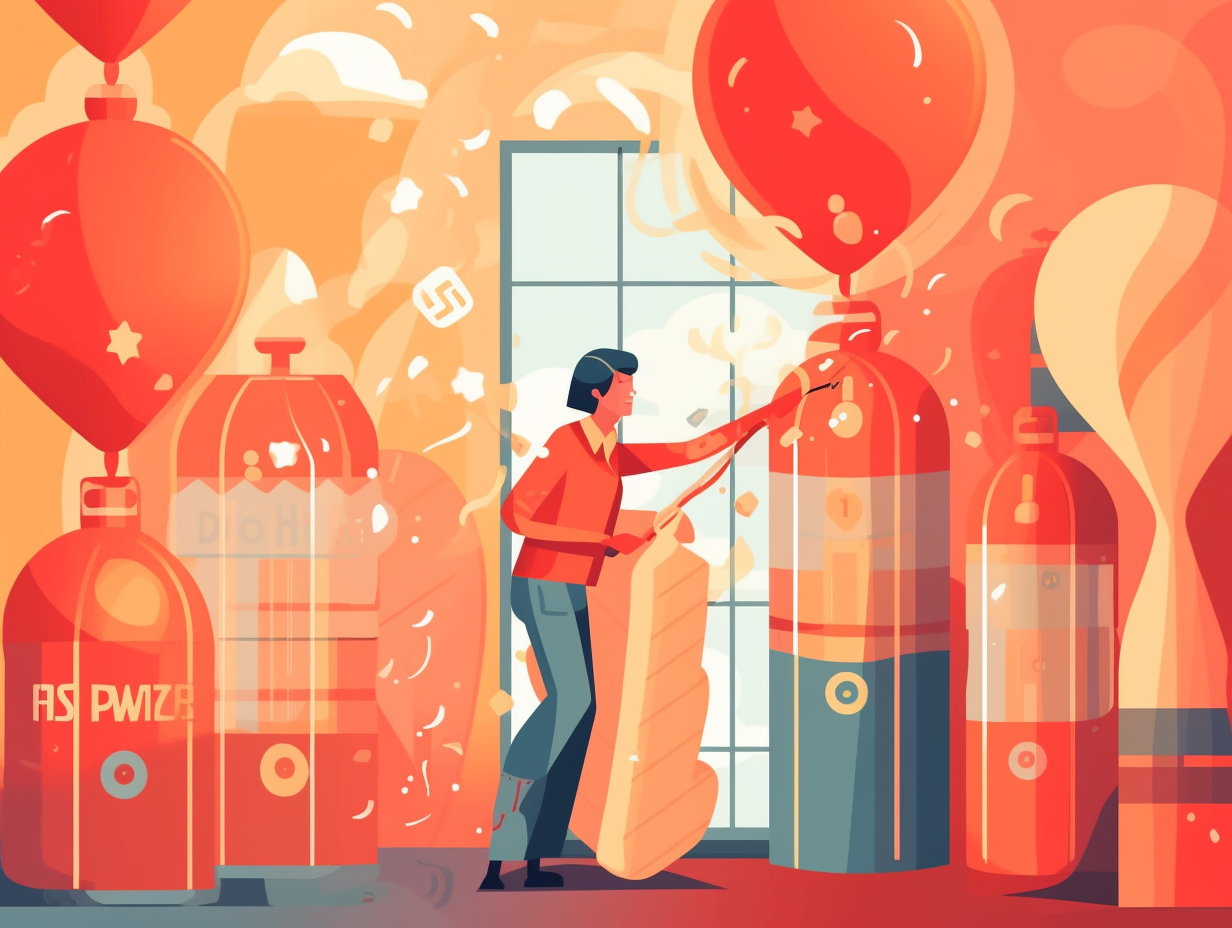11 Fascinating Fun Facts About Fire Extinguishers: Unveiling Their Hidden Wonders

1. CO2 Extinguishers: From Telephone Switchboards to Hollywood Sets
Before we all had a "switchboard" in our pockets with various silent settings, telephones posed a fiery threat that needed a truly cool solution: Enter the carbon dioxide fire extinguisher, invented by the Walter Kidde Company in 1924 to douse flames in telephone switchboards. Replacing oxygen with a touch of environmental kindness, this extinguisher now enjoys a showbiz career saving stuntmen from hot pursuits on film and TV sets.
Source => onlinesafetytrainer.com
2. UK Fire Extinguishers: Functionality Meets Fashion
Feeling a little red in the face, British fire extinguishers find themselves a fashionable splash of color in the form of a small coded band that helps them stand out in a crowd: The UK adheres to BS EN3 Standard, which dictates that fire extinguisher bodies must be red, but they sport a chic colored band to differentiate their types – red for water, cream for foam, blue for dry powder, black for CO2, yellow for wet chemical, and green for clean agent extinguishers, ensuring that in a fiery emergency, one can quickly pick the extinguisher best suited for the job, and potentially save lives with a flick of fashion-forward wrist.
Source => ifsecglobal.com

Did you know the first self-propelled automobile in New York City was actually a steam-powered fire engine called "The Exterminator"? Discover its unique history and more!
=> Fun Facts about Firefighters
3. Fire Grenades: The Superheroes of the 1800s
Before the Avengers assembled, there were "fire grenades" saving the day in late 1800s living rooms: these glass orbs, filled with extinguishing agents like carbon tetrachloride or powdered chemicals, were hurled at the base of fires, shattering upon impact and smothering the flames with their superpower substances.
Source => antiquetrader.com
4. Steampunk Fire Extinguishers: The Good Ol' Days
In the days of yore, when fancy gadgets like the iPhone were but a twinkle in humanity's eye, fire extinguishers took a more steampunk approach to dousing those unexpected blazes: Back then, they relied on pumps, levers, or even good ol' chemistry to dispense their life-saving H2O, sans the modern-day wheels, ensuring that fires were history like yesterday's newspaper.
Source => nonamehiding.com

5. Size Ratings: Extinguishers' Clever Coverage Code
Size doesn't always matter, at least not when it comes to fire extinguishers: Contrary to popular belief, the size rating of a fire extinguisher isn't a measure of how much extinguishing agent it contains, but rather, it indicates the coverage area it can provide (e.g., 20B means it can cover 20 square feet), while Class A size ratings showcase their water equivalency, with each number signifying 1 ¼ gallons of water. Who knew fire extinguishers had so much more to them than just the ingredients?
Source => guardianfireprotection.com
6. The Weighty World of Fire Extinguishers
When life gives you lemons, weigh them on a scale of fire extinguishers – ranging from baby extinguisher to Herculean fire monster: The weight of fire extinguishers varies from a petite 2.5 pounds to a whopping 350 pounds, with the suitable size depending on the room's dimensions, materials present, and potential fire hazards.
Source => webstaurantstore.com
7. Workplace Heroes: Annual Fire Extinguisher Training
Here's a little-known fact that will extinguish your boredom and set your curiosity ablaze: employees assigned to unleash the fury of fire extinguishers as workplace heroes must be trained annually and upon assignment in the art of dousing flames, as per the sizzling regulations of 29 CFR 1910.157(g)(3).
Source => osha.gov
8. Foam Fire Extinguishers: The Foam Party of Fire Safety
When fire meets its foamy nemesis, even the toughest of flames can't help but surrender: Foam fire extinguishers can tackle both Class A and Class B fires, expertly taking down petrol and volatile liquids while forming a protective, flame-smothering seal that nips re-ignition in the bud. Bonus points for being non-toxic, non-damaging, and not zapping you with an electric shock when up against a 35kv electrical fire – truly the foam party of fire safety!
Source => lhcfp.co.uk
9. Cleanup Crescendo: Extinguishers' Mess Management
Fire extinguishers: the misunderstood maestros of mess management! These heroic hodgepodge hurlers have distinct serenades for each class of fire's grand finale, but you best believe that their encores require an educated cleanup crew: Dry chemical extinguishers can conquer class A, B, and C fires, but their abrasive autographs may tarnish your beloved electronics and metal surfaces if left unattended, while wet chemical virtuosos pick apart pesky class K performance fires, and dry powder aficionados usher in the curtain call for class D metal fires - encore or en-gone, knowing how to sweep up their finale residues is crucial to minimize any collateral damage.
Source => firesystems.net

10. CO2 Extinguishers: Firefighters and Bouncers in One
Who knew fire extinguishers could be such cool customers? Carbon dioxide extinguishers, in particular, moonlight as firefighters and bouncers at the same time: These versatile devices not only starve fires of oxygen but also lower the temperature on Class B and C fires, stopping the heat from getting things too hot to handle. However, they're less useful on Class A fires, so you'll find them hanging out in labs, mechanical rooms, kitchens, and flammable liquid storage areas instead.
Source => sc.edu
11. The Obsolete Barroom Brawl Extinguishers
Throwback to the barroom brawl extinguishers: those old-school soda-acid foam-spewing, carbon tetrachloride vaporizing devices! Alas, the National Fire Protection Association (NFPA) has deemed these quirky lifesavers obsolete, with guidelines now in place specifying which models should be retired, based on their manufacturing date and serviceability according to the manufacturer's maintenance manual.
Source => resources.impactfireservices.com
Related Fun Facts




















